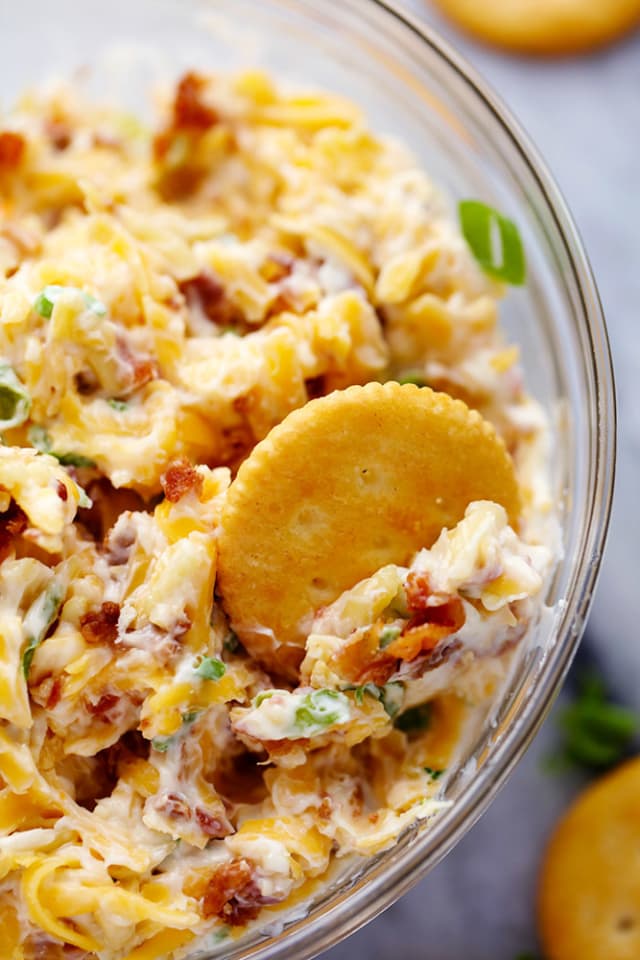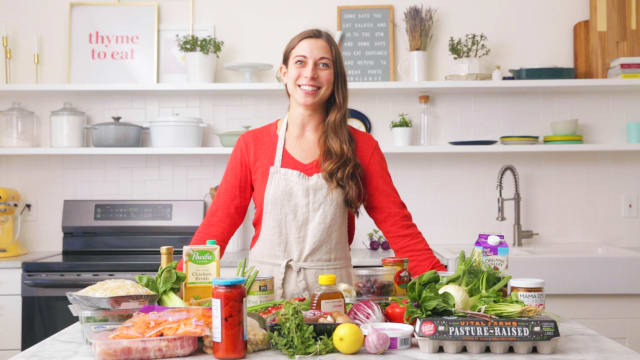This
post was originally published on
this sitehttp://chriskresser.com/

Unfortunately, the conventional treatments available for Parkinson’s disease are limited to surgical interventions and medications that come with numerous side effects. But a growing body of research indicates that there are many modifiable risk factors associated with the condition, providing us with clues as to what measures we can take to prevent the onset of the disease. Read on to learn how to prevent Parkinson’s disease by using evidence-based dietary and lifestyle interventions.
What Is Parkinson’s Disease?
Parkinson’s disease (PD) is a neurodegenerative disease characterized by a gradual loss of neurons in the brain that produce the crucial neurotransmitter dopamine; mitochondrial dysfunction; neuroinflammation; oxidative stress; and an accumulation of “misfolded” (malformed, and therefore dysfunctional) proteins in neurons. (One particular protein, called alpha-synuclein, plays a significant role in how Parkinson’s is diagnosed.) Together, these factors damage the central nervous system and impair motor function, causing the hallmark symptoms of PD:
- Stiff muscles
- Difficulty with standing, walking, and other bodily movements
- Involuntary movements
- Rigidity
- Slow shuffling gait
- Difficulty speaking
- Dementia
- Reduced or lost sense of smell
- Reduced facial expression
- Constipation
Eight Causes of Parkinson’s Disease
Many scientists and doctors dream of developing a cure for Parkinson’s disease. However, the reality is that Parkinson’s disease is caused by multiple factors and therefore is unlikely to respond to a single therapy.
Rather than focusing our efforts on finding a “silver bullet” drug to cure PD, we can make more progress and improve quality of life by addressing the many underlying causes of Parkinson’s disease. This approach may not only prevent Parkinson’s disease; it could also potentially reverse some symptoms in already-afflicted individuals.
1. Gut Dysfunction
The gut–brain axis, a two-way communication system between the enteric nervous system of the gut and the central nervous system, is intimately involved in the PD disease process. Chronic constipation has long been recognized as an early sign of Parkinson’s disease, preceding the onset of motor symptoms by many years. Alpha-synuclein proteins are deposited in gastrointestinal nerves up to 20 years before the onset of Parkinson’s disease symptoms, suggesting that the gut may be “ground zero” in the development of PD. (2)
Alpha-synuclein spreads from the gut to the brain. Epidemiological research supports this theory, as severing the nerve that connects the brain and colon reduces the risk of PD. (3) But what causes accumulation of abnormal alpha-synuclein in the gut in the first place? It may be triggered by changes in the gut microbiota. (4)
Normally, proteins in our cells form through “folding” into specific functional shapes. But sometimes, “misfolding” occurs, and the result is a protein that doesn’t work as it should, or that clumps together and accumulates—which is what happens with alpha-synuclein as it relates to PD. Gut dysbiosis triggers inflammation-induced misfolding of alpha-synuclein in gastrointestinal nerves, which subsequently link up with other nerves along the gut–brain axis. Those abnormal alpha-synuclein proteins travel along the gut–brain axis and may eventually lead to Parkinson’s disease.
Parkinson’s disease patients demonstrate distinct patterns of gut dysfunction that may eventually lead to Parkinson’s, including: (5, 6, 7)
Dysbiosis results in an elevated production of lipopolysaccharide (LPS), an inflammatory bacterial byproduct. When leaky gut is also involved, LPS circulates throughout the body and brain, where it causes neuroinflammation and leads to a loss of dopamine-producing neurons. (8, 9, 10, 11)
Given the effects of dysbiosis and leaky gut on the brain, improving gut health should be first and foremost in every Parkinson’s disease prevention plan.
2. Gluten
Gluten ataxia, a loss of control of body movements, has long been recognized as a neurological symptom of gluten sensitivity. Gluten sensitivity, as well as celiac disease, may also have other neurological manifestations, including the same motor symptoms seen in Parkinson’s disease. (12) Several case studies have found that a gluten-free diet can help alleviate these symptoms, and genetic research indicates that people with celiac disease often test positive for PARK7, a protein associated with PD. These findings suggest that there is an important relationship between gluten sensitivity and Parkinson’s disease. (13, 14, 15)
3. Autoimmunity
A recent study published in Nature provides direct evidence that autoimmunity contributes to Parkinson’s disease. (16) The researchers found that fragments of alpha-synuclein cause the body’s immune system to mistakenly recognize dopamine-producing neurons as foreign bodies and destroy them. Interestingly, PD and autoimmune diseases share a common genetic basis. (17) These findings suggest that correcting autoimmunity may be vital for preventing and treating PD.
4. Blood Sugar Problems
When the bloodstream contains a high concentration of sugar, as in hyperglycemia and insulin resistance, the proteins circulating in the body can become damaged. Alpha-synuclein is no exception and, once it’s damaged, it can cause even more harm to the neurons in the brain. Insulin resistance is significantly underdiagnosed in non-diabetics with Parkinson’s disease. (18) That’s cause for worry because insulin resistance may worsen PD by further damaging alpha-synuclein.
The good news is that balancing blood sugar levels protects the brain’s neurons. (19) Improving insulin sensitivity and normalizing blood sugar are important for reducing the risk of PD.
5. Iron Overload
When it comes to iron, more is not necessarily better. Iron overload is the term used to describe an overaccumulation of iron in the body. It can occur in people with certain genetic predispositions or in those who’ve been supplementing long term with iron or received numerous blood infusions. You can learn more about iron overload in my article “Does Iron Overload Cause Diabetes and Heart Disease?”
In high concentrations, iron causes oxidative damage in all body tissues, including the brain. People with PD have high brain iron levels, suggesting that iron-induced oxidative stress plays a role in the disease process. (20) Conversely, once people receive treatment to reduce their iron levels, they often see clinical improvements in their Parkinson’s disease. (21)
6. Circadian Disruption
The circadian rhythm is the roughly 24-hour biological cycle in humans that regulates a diverse array of physiological and behavioral functions. Circadian rhythm disruption, induced by factors such as blue light exposure at night and abnormal sleep–wake cycles, increases the risk of PD by altering the expression of genes and proteins that regulate dopamine in the brain. (22) Accordingly, chronic insomnia is associated with an increased risk of PD, and abnormal sleep–wake cycles can exacerbate the symptoms of the disease. (23)
7. Stress
Chronic psychological stress is a risk factor for Parkinson’s disease. Chronic stress elevates the hormone cortisol, promoting a pro-inflammatory state that ultimately kills dopamine-producing neurons in the brain. (24) Cortisol can also interfere with neuronal plasticity—the brain’s ability to adapt and learn from new (and potentially stressful) circumstances. (25) In animal studies, a high frequency of stressful life events increases the risk of PD. In humans, stress exaggerates PD-related motor dysfunction and nonmotor symptoms. (26) This evidence suggests that stress management is crucial for inhibiting the development and progression of Parkinson’s disease.
8. Environmental Toxins
Oxidative stress is a well-known cause of alpha-synuclein accumulation in the brain. (27) Environmental toxins are potent inducers of oxidative stress, and a handful of specific toxins have been implicated in PD.
Pesticides and Herbicides
Rotenone is an insecticide commonly used in home gardens for pest control, for lice and tick prevention in pets, and for managing fish populations in bodies of water. Surprisingly, rotenone can be used in organic food farming because it is labeled as a natural product. It readily crosses into the brain from the bloodstream and, once it’s in a cell, it causes mitochondrial dysfunction and excessive production of free radicals.
Rotenone also inhibits the activity of proteasomes, protein complexes that get rid of unneeded or damaged proteins. That decreased proteasome activity may allow misfolded alpha-synuclein to accumulate, which causes Parkinson’s. (28) In animal models, rotenone exposure produces motor deficits reminiscent of PD, alpha-synuclein accumulation, and degeneration of dopamine-producing neurons.
Paraquat and maneb, an herbicide and a fungicide, respectively, also readily cross into the brain from the bloodstream, are toxic to mitochondria, and damage neurons. (29) Pesticide applicators, agricultural workers, and those who live in rural areas have a significantly elevated risk of Parkinson’s disease since they’re often exposed to these chemicals. (30)
Organochlorine pesticides, the most infamous of which is DDT, were used extensively from the 1940s to the 1970s in agriculture and mosquito control. While they have since been banned in the United States due to their neurotoxic effects, they degrade slowly, and they’re still lingering in the environment today. Organochlorine pesticide exposure has been linked to Parkinson’s disease in both animal and human studies. (31) Postmortem examinations of PD brains have found high levels of organochlorine compounds, especially in regions dense in dopamine-producing neurons, compared to non-PD brains. (32)
Toxic Mold
I previously wrote about the harmful effects of toxic mold in my articles “5 Things You Should Know about Toxic Mold Illness” and “How Mold Exposure Can Hurt Your Gut Health.” Mycotoxins, the metabolites produced by toxic molds, may contribute to the development of Parkinson’s disease by depleting dopamine and inducing inflammation and cell death in certain regions of the brain. (33)
Air Pollution
Long-term exposure to air pollution, including ambient particulate matter (tiny particles in the air), nitrogen oxides, carbon monoxide, and ozone, significantly increases a person’s risk of Parkinson’s disease. (34, 35) Minerals processing, brick and cement works, refineries, vehicle exhaust, wildfires, and fossil fuel power plants are significant sources of harmful (but essentially invisible) particulate matter.
Chronic exposure to air pollution may contribute to PD by triggering oxidative stress and promoting the misfolding of alpha-synuclein. This misfolded alpha-synuclein spreads, neuron to neuron, similar to how it travels along the gut–brain axis. Inhalation of air pollutants also causes neuroinflammation and cell death of neurons, factors in the development and progression of PD.
Our environment is unfortunately full of toxic assaults that may contribute to the development of PD. However, there are steps you can take to reduce your exposure.
Keep reading to discover these steps, as well as many other actions you can take to reduce your risk of Parkinson’s disease.
Here’s How to Prevent Parkinson’s Disease
The underlying causes of this condition can provide valuable clues for how to prevent Parkinson’s disease. Here are 11 ways to do it with diet and lifestyle changes.
1. Eat Wisely and Choose Whole Foods
A diet based on whole, nutrient-dense foods is an excellent first step for reducing your risk of Parkinson’s disease. A high intake of fresh vegetables, fruits, nuts and seeds, fish, olive oil, coconut oil, fresh herbs, and spices is associated with a reduced risk of PD development and slower disease progression. (36, 37) Eating plenty of vegetables and fiber boosts levels of an anti-inflammatory group of gut bacteria that are inversely associated with Parkinson’s disease and may play a protective role against neurodegenerative processes in the brain. (38)
Choose organic foods over conventionally grown foods as much as possible. Eating organic reduces your exposure to neurotoxic pesticides and herbicides. If you can’t buy all organic food, refer to the Environmental Working Group’s Dirty Dozen and Clean Fifteen lists to determine which types of conventional produce are lowest in pesticide residues and are safe to buy non-organic.
2. Make Sure You Get Enough Vitamin D and Omega-3s
Vitamin D deficiency is associated with an increased risk of Parkinson’s disease, whereas vitamin D supplementation and sunlight exposure are associated with a reduced risk. (39, 40) How does vitamin D combat neurodegeneration in Parkinson’s disease? A high density of vitamin D receptors reside in the part of the brain most affected by Parkinson’s disease; this finding suggests that vitamin D regulates the function of neurons.
Vitamin D also lessens the severity of autoimmunity and regulates neurotrophins, proteins that induce the survival, development, and function of neurons. Vitamin D is one nutrient you won’t want to skimp on if your goal is to prevent Parkinson’s disease! Safe sun exposure is the best method for boosting vitamin D levels. However, full-body sun exposure is not possible for most people year-round; in this case, I recommend you take cod liver oil and eat fatty cold-water fish, beef liver, and egg yolks to obtain dietary vitamin D.
Omega-3 fatty acids, like EPA and DHA, are critical for normal brain development and function across the lifespan. Low levels of EPA and DHA increase the risk of neurodegeneration, whereas omega-3 supplementation can help reduce neuron death in the brain, alleviate neuroinflammation, boost antioxidant enzymes, and relieve motor symptoms in PD. (41, 42, 43, 44) EPA and DHA are abundant in seafood, so I recommend consuming two to three servings of seafood per week to achieve a healthy intake of these neuroprotective fatty acids.
3. Give Up Gluten
Given the probable relationship between gluten sensitivity, gastrointestinal inflammation, and PD, gluten sensitivity testing is a must for anyone seeking to reduce their risk of PD. If testing reveals gluten sensitivity, I strongly suggest you remove it entirely from your diet.
4. Try the Ketogenic Diet
The ketogenic diet is characterized by a high fat intake—typically 80 to 90 percent of total calories—moderate protein intake, and a very low carbohydrate intake. Originally developed as a treatment for refractory epilepsy in children, the ketogenic diet has exploded in popularity in recent years.
A growing body of clinical research shows the health benefits of the ketogenic diet, including weight loss and improvements in cardiovascular disease risk factors. However, some of the most exciting findings related to the ketogenic diet deals with its impact on neurological diseases like Parkinson’s. In animal models of PD, the ketogenic diet reduces mitochondrial damage and improves motor function. (45) In humans, the diet improves both motor and non-motor symptoms of PD. (46) There are two primary ways the ketogenic diet alleviates symptoms of PD:
- Ketones are an alternative fuel source for the brain. The human brain typically relies on glucose for energy. In PD, part of the process required to produce energy from glucose is impaired, making glucose an inefficient fuel source. Ketones bypass that process and are readily taken up by the brain, so they serve as an efficient alternative energy source for neurons.
- Ketone metabolism decreases oxidative stress in the brain and reduces neuroinflammation, thus alleviating two of the underlying causes of PD.
While I don’t recommend going on a permanent ketogenic diet, eating this way three to four times per year can protect against PD as well as a number of other chronic diseases. If you’re already showing signs of PD, the ketogenic diet may help.
5. Take Prebiotics and Probiotics
Gut dysbiosis plays a pivotal role in the development and progression of Parkinson’s disease. Accordingly, probiotics have the potential to help with onset of the disease, as well as management of its symptoms. A combination of Lactobacillus acidophilus, Bifidobacterium bifidum, L. reuteri, and L. fermentum has been found to relieve constipation, improve insulin sensitivity, and improve antioxidant status in people with PD, thus correcting several of the characteristic features of the disease. (47)
Prebiotics, fermentable fibers that feed beneficial gut bacteria, may be another useful intervention for preventing Parkinson’s disease. FOS and GOS, two types of prebiotic fibers, increase brain-derived neurotrophic factor, a protein important for neuronal protection, survival, and plasticity. Brain-derived neurotrophic factor is abnormally low in Parkinson’s disease patients; boosting its levels may have neuroprotective effects. (48, 49)
6. Get Rid of Toxins
Environmental toxins, toxic mold, and air pollution are significant contributing factors in the development of Parkinson’s disease. Creating a healthy living environment at work and at home is essential for reducing your risk of Parkinson’s disease. To limit your exposure to neurotoxic pesticides, herbicides, and organochlorines, invest in high-quality filters for your drinking and bathing water. Berkey water filters are an excellent option. If you live in an urban or agricultural area where vehicle exhaust and pesticides are common, you may also want to purchase an air purifier, such as an IQAir machine, to filter the air in your home. IQAir machines filter ultrafine pollution particles down to 0.003 microns in size. For reference, the particulate matter pollution linked to PD is 2.5 microns in size, and neurotoxic mold spores range from 3 to 100 microns in size.
Speaking of mold, if you suspect your home has a mold problem, test for it! Mold and mycotoxins are harmful to the brain, and a mold problem should not be ignored if your goal is to prevent Parkinson’s disease and optimize your brain health. If you find mold in your home, you can get rid of it. If a mold problem is severe enough, you may need to consider moving to a new, mold-free environment.
You also need to look out for bisphenol A (BPA). Aluminum food and beverage containers feature a protective inner lining that contains BPA. In addition to being a potent endocrine disruptor, BPA interferes with the neurons that produce dopamine and may contribute to the development of Parkinson’s disease. People with Parkinson’s also have a decreased ability to detoxify BPA, which makes this chemical even more harmful. (50)
While “BPA-free” canned foods are available, the safety of BPA alternatives is questionable; in fact, recent research indicates that BPA alternatives may be just as toxic, if not more toxic, than BPA itself! For more information on BPA, including tips on how to avoid it, see my article “Re-examining the Evidence on BPA and Plastics.” To protect your brain health, focus on consuming fresh foods and limit your consumption of canned foods as much as possible.
7. Adopt a Regular Sleep Rhythm
Optimizing your circadian rhythm and improving your sleep promotes brain health and may reduce your risk of developing Parkinson’s disease. To optimize your rhythm, create a regular sleep–wake schedule and sleep in a room that is completely dark and free of light pollution from electronic devices. Avoid using blue light-emitting devices, such as computers and cell phones, several hours before bed. If you must use these devices, wear a pair of blue light-blocking glasses while doing so; the glasses prevent blue light from disrupting your sleep rhythm.
8. Turn to Botanicals
Several plant compounds have been studied for their neuroprotective effects. Curcumin, a bright yellow compound derived from turmeric root, is neuroprotective in Parkinson’s disease. (51) Sulforaphane, a phytochemical present in large quantities in broccoli sprouts, protects against rotenone-induced neurotoxicity; rotenone, as discussed above, is one of the key environmental toxins implicated in the development of Parkinson’s disease. (52) Frequent consumption of green tea, rich in polyphenols such as EGCG, is associated with a reduced risk of PD. Green tea’s anti-PD properties include its ability to remove excess iron from the body. (53)
9. Get More Exercise
Substantial evidence indicates that physical exercise inhibits the progression of Parkinson’s disease by enhancing neuroplasticity and promoting the growth and survival of neurons. (54) Aerobic exercise appears to have the most favorable effects on brain health and Parkinson’s disease progression.
10. Reduce Your Stress
Since stress is a risk factor for Parkinson’s disease, stress-reduction practices should be an integral part of a Parkinson’s disease prevention plan. Tai chi, yoga, and mindfulness training not only reduce stress but also improve mobility, balance, and quality of life for everyone, including those with Parkinson’s. (55, 56) Meditation, gratitude journaling, and spending time in nature are also excellent strategies for reducing stress and cultivating a resilient, healthy brain.
11. Try Light Therapy
Light therapy reduces the neurodegeneration typical in Parkinson’s. In animal models of PD, near-infrared light protects dopamine-producing neurons from cell death and improves motor symptoms by restoring normal cellular energy production and decreasing oxidative stress. (57) Several small human trials have shown that near-infrared light helps speech, cognition, gait, and “freezing episodes,” or moments where a person is temporarily unable to move. (58) Near-infrared light is typically administered either as low-level laser or LED (light-emitting diode) therapy. If you are interested in trying light therapy, I recommend seeking out a practitioner who has sufficient experience with the process. If you experience benefits from the treatment, you may eventually want to invest in an at-home light therapy unit. Near-infrared sauna therapy may also prevent Parkinson’s. I use a SaunaSpace sauna at home, and their single light panel is a great option if you’re short on space.
Now I want to hear from you. Would you consider trying the Parkinson’s disease interventions I’ve outlined in this article? Let me know in the comments below!
The post How to Prevent Parkinson’s Disease with Diet and Lifestyle appeared first on Chris Kresser.













 As you get keto-adapted, most people find the inclination to snack (at least snack frequently) decreases. But that can take a bit of time. It’s not necessarily something to expect your first week (although some folks do begin to experience the change within a few days, provided they’re eating enough overall). Still, even the most long-term keto dieters will want a snack now and then—or will replace a meal with a snack because they’ve settled into a solid keto nutritional strategy and don’t always need three regular “meals” most days.
As you get keto-adapted, most people find the inclination to snack (at least snack frequently) decreases. But that can take a bit of time. It’s not necessarily something to expect your first week (although some folks do begin to experience the change within a few days, provided they’re eating enough overall). Still, even the most long-term keto dieters will want a snack now and then—or will replace a meal with a snack because they’ve settled into a solid keto nutritional strategy and don’t always need three regular “meals” most days.





















 For now classes are 6pm and 640pm at 2840 Wildwood st in the Boise Cloggers studio.
Book your class NOW!
click this ==>
For now classes are 6pm and 640pm at 2840 Wildwood st in the Boise Cloggers studio.
Book your class NOW!
click this ==>








